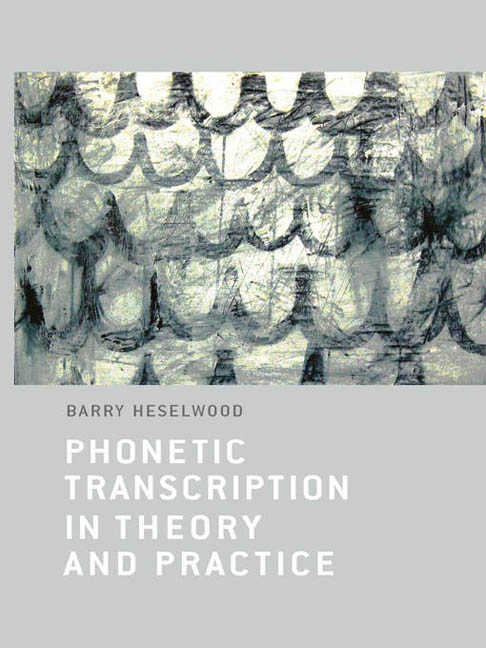Book contents
- Frontmatter
- Contents
- List of Tables
- List of Figures
- Preface
- Acknowledgements
- Introduction
- 1 Theoretical Preliminaries to Phonetic Notation and Transcription
- 2 Origins and Development of Phonetic Transcription
- 3 Phonetic Notation
- 4 Types of Transcription
- 5 Narrow Impressionistic Phonetic Transcription
- 6 Phonetic Transcription in Relation to Instrumental and Other Records
- 7 Uses of Phonetic Transcription
- Glossary
- References
- Appendix: Phonetic Notation Charts
- Index
1 - Theoretical Preliminaries to Phonetic Notation and Transcription
Published online by Cambridge University Press: 07 December 2017
- Frontmatter
- Contents
- List of Tables
- List of Figures
- Preface
- Acknowledgements
- Introduction
- 1 Theoretical Preliminaries to Phonetic Notation and Transcription
- 2 Origins and Development of Phonetic Transcription
- 3 Phonetic Notation
- 4 Types of Transcription
- 5 Narrow Impressionistic Phonetic Transcription
- 6 Phonetic Transcription in Relation to Instrumental and Other Records
- 7 Uses of Phonetic Transcription
- Glossary
- References
- Appendix: Phonetic Notation Charts
- Index
Summary
Introduction
In this first chapter, a number of points of theory need to be clarified concerning both the relationship between spoken and written language, and the status of phonetic transcription as a particular kind of technographic writing for representing speech. In the course of clarification I hope to define proper phonetic notation and proper phonetic transcription, to distinguish them from the notion of a phonographic orthography, and to give theoretical expression to respelling and transliteration in relation to phonetic transcription. An issue of overriding importance throughout the book is what exactly phonetic symbols denote and what transcriptions represent. The issue is tackled largely from an assumption that the notion of a ‘segment’ is valid providing we take a sophisticated view of it as being rooted in the mental world of perception, not the physical world of measurable properties. Arguments for this position are put forward in Section 1.2.1 and returned to in Chapter 2 Section 2.2.4. Like the concept of the phoneme in phonology, the segment is often denied, but something remarkably like it seems to be reinstated quickly if only to provide a concept about which statements can be predicated.
Phonetic Transcription and Spelling
Much of the discussion of phonetic transcription in this chapter is concerned with the differences between transcription and spelling and thus between spoken and written language. In any consideration of written language there has to be some account of the many different writing systems that have arisen in the relatively short time since written language first appeared around the end of the fourth millennium bce. Writing also features prominently in Chapter 2, where the emergence of transcription out of phonographic processes in writing systems is traced. It will therefore be useful to outline briefly the main conceptual division of how writing represents language, that is to say whether its units represent meaningful words and morphemes (logography) or meaningless units of sound structure such as syllables, or consonants and vowels (phonography). The division is based on Sampson (1985: 32–5).
Information
- Type
- Chapter
- Information
- Phonetic Transcription in Theory and Practice , pp. 5 - 36Publisher: Edinburgh University PressPrint publication year: 2013
